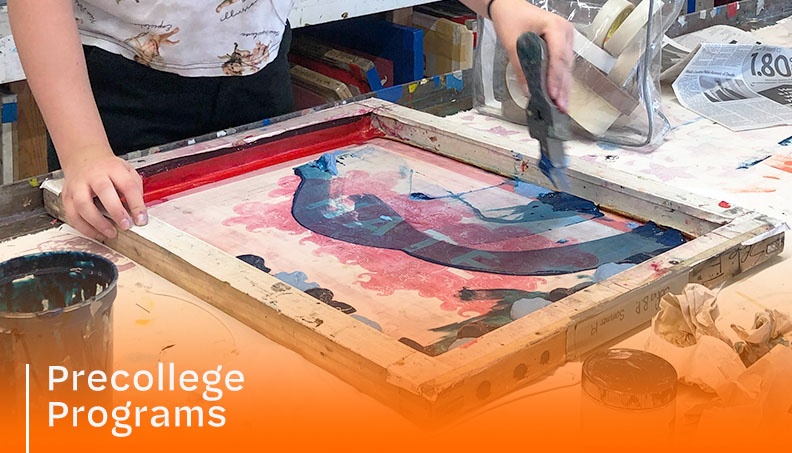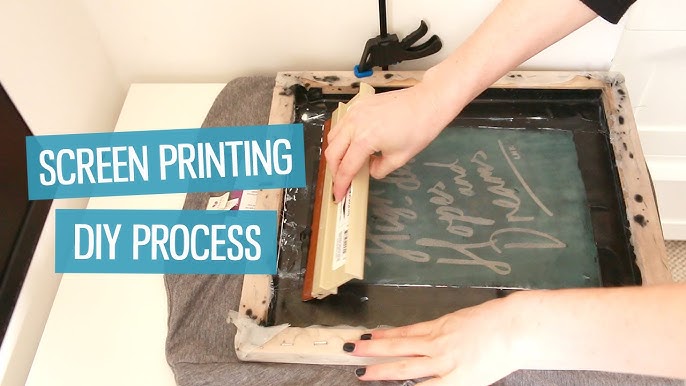Discover the Numerous Types of Screen Printing Techniques for Your Following Project
Screen printing supplies a varied range of methods that can boost any kind of creative job. From conventional techniques like serigraphy to contemporary advancements such as direct-to-garment printing, each approach has its one-of-a-kind benefits. Specialty choices, consisting of environment-friendly and metal inks, introduce a lot more opportunities. Comprehending these techniques can considerably impact the final end result. Nonetheless, the challenge depends on picking one of the most suitable approach for details needs and preferred impacts. What aspects should one consider?

The Basics of Screen Printing
Although screen printing may appear complex, it is fundamentally an uncomplicated process that includes transferring ink with a mesh screen onto various surfaces. The strategy starts with the creation of a stencil, which defines the design to be published. This pattern is attached to a mesh screen, typically made of polyester or nylon. As soon as the pattern is in location, ink is related to the screen and pushed via the mesh using a squeegee, causing the preferred pattern being printed on the underlying product.
Screen printing can be carried out on a wide variety of substratums, consisting of paper, textile, and plastic, making it a functional selection for various jobs. The procedure permits for elaborate layouts and vibrant shades, making it preferred in markets such as advertising and marketing, style, and art. Understanding these essentials gears up individuals with the fundamental expertise called for to explore advanced strategies in screen printing.
Conventional Screen Printing Techniques
Conventional screen printing techniques have been utilized for centuries, protecting the workmanship and creativity of this approach. This strategy makes use of a mesh screen to transfer ink onto a substrate, such as textile or paper, enabling vivid and resilient designs. The procedure begins with producing a stencil, which blocks specific locations of the screen to manage where the ink will be used.
One prominent method is serigraphy, usually made use of for restricted versions and creative prints. An additional is the usage of water-based inks, which are environment-friendly and supply a soft feeling on fabrics - 10:9 Design LLC Company. In addition, standard techniques can consist of hands-on printing, where artisans use ink with a squeegee, guaranteeing accuracy and focus to information
These methods stay valued in the industry for their tactile high quality and the one-of-a-kind appearances they create, attracting both developers and customers who value the heritage of screen printing.
Digital Screen Printing Innovations
As the demand for faster production and personalization in the printing market has surged, digital screen printing developments have become a game-changer. This modern technology mixes standard screen printing techniques with digital processes, enabling quick prototyping and complex designs that were formerly difficult to achieve. One substantial innovation is the introduction of direct-to-garment (DTG) printing, which promotes top quality, full-color prints on numerous textiles without the need for displays. Furthermore, developments in ink solutions have actually brought about environment-friendly options that keep vivid shades while minimizing environmental effect. Using automated systems further improves manufacturing, decreasing labor costs and boosting precision. These developments not only deal with little set orders and tailored layouts but additionally permit quicker turn-around times, making them perfect for companies concentrated on conference customer needs in a busy market. Digital screen printing, subsequently, stands for a crucial evolution in the domain of printing methods.
Specialty Screen Printing Approaches
Checking out specialty screen printing approaches discloses a diverse array of methods that press the boundaries of creative thinking and performance in the printing industry. Amongst these, glow-in-the-dark inks give an one-of-a-kind visual impact, making layouts come active in low-light conditions. Metallic inks, known for their shimmering surface, add a touch of high-end to published materials. One more ingenious approach is discharge printing, which removes dye from the textile as opposed to adding ink, causing a soft, vintage feel. High-density printing develops an increased structure externally, improving responsive involvement. Furthermore, water-based inks are obtaining appeal for their lively shades and decreased environmental influence. Each of these specialized strategies provides to particular style requirements, making it possible for brands and artists to create standout items that reverberate with their target markets. By leveraging these techniques, businesses can raise their screen printing jobs to new elevations, guaranteeing unforgettable perceptions.
Eco-Friendly Screen Printing Options
Green screen printing alternatives are getting grip as the sector moves in the direction of sustainability. Lasting ink options and the use of biodegradable materials are key parts in reducing the ecological effect of the printing procedure. By adopting these techniques, screen printers can add to a much more lasting future while maintaining top notch outcomes.
Sustainable Ink Options

Biodegradable Materials Use
As the screen printing industry evolves, the incorporation of naturally degradable products is coming to be increasingly essential for ecologically mindful techniques. Makers and developers are currently discovering inks and substrates made from natural, renewable energies that disintegrate more efficiently than conventional counterparts. These eco-friendly options lower plastic waste and minimize environmental influence, website lining up with the growing need for lasting items.
Usual examples include water-based inks and natural cotton materials, both of which reduce harmful chemicals and promote eco-friendliness. Brand names that adopt these materials typically boost their market charm, attracting consumers who prioritize sustainability. As awareness of environmental issues proceeds to climb, the change in the direction of naturally degradable products in screen printing is most likely to obtain momentum, cultivating a greener industry standard.
Selecting the Right Technique for Your Task
Exactly how can one establish one of the most ideal screen printing method for a details project? The choice depends upon numerous variables, consisting of the product to be printed on, the intricacy of the style, and the preferred manufacturing quantity - 10:9 Design Abilene. For circumstances, direct-to-garment printing is excellent for complex styles with countless shades, while traditional screen printing succeeds for bigger runs of less complex graphics
Furthermore, factor to consider of the end-use of the published item is vital. For outdoor applications, strategies that offer durability and weather resistance, such as plastisol ink, might be chosen. On the other hand, environmentally-conscious tasks might take advantage of biodegradable materials or water-based inks.
Inevitably, understanding the task's one-of-a-kind requirements allows for an enlightened selection, making sure both aesthetic allure and useful long life. By examining design intricacy, material compatibility, and production scale, one can successfully choose one of the most proper screen printing method to satisfy their job's goals.
Frequently Asked Concerns
What Is the History of Screen Printing?
Screen printing came from in old China around 1000 ADVERTISEMENT, developing via Japan and Europe. By the 20th century, it came to be preferred in business art and style, transforming exactly how layouts were generated and distributed worldwide.

How Do I Prepare Artwork for Screen Printing?
To prepare artwork for screen printing, one need to assure high resolution, make use of a suitable color setting, produce separate layers for each color, and transform message to lays out, guaranteeing compatibility with the printing procedure and preferred outcome.
What Products Are Best for Screen Printing?
The most effective materials for screen printing consist of high-quality inks, sturdy screens, and suitable substratums like cotton, polyester, or blends. In addition, using proper solution and mops can boost the printing process and final outcomes.
Can I Screen Publish in your home?
Yes, screen printing in your home is feasible. With the best materials, setup, and techniques, people can produce top quality prints. Careful factor to consider of work space and tools is necessary for successful outcomes.
What Are Usual Errors in Screen Printing?
Typical mistakes in screen printing consist of inappropriate direct exposure times, inadequate ink consistency, imbalance of screens, insufficient cleansing of materials, and ignoring to test prints. These errors can jeopardize the top quality and precision of the end product.
Screen printing might seem complicated, it is basically a simple procedure that involves transferring ink through a mesh screen onto numerous surfaces. As the demand for faster manufacturing and personalization in the printing industry has actually risen, digital screen printing technologies have actually emerged as a game-changer. Discovering specialty screen printing approaches discloses a diverse array of methods that press the boundaries of imagination and functionality in the printing sector. The finest materials for screen printing consist of premium inks, long lasting displays, and suitable substrates like cotton, polyester, or blends (10:9 Design Embroidery). Typical errors in screen printing include incorrect direct exposure times, inadequate ink uniformity, imbalance of screens, not enough cleansing of products, and disregarding to examine prints